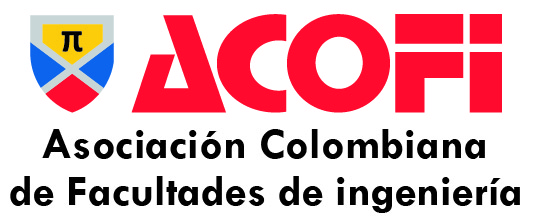Development and validation of an instrument to measure student learning: the Bernoulli's Law Test
DOI:
https://doi.org/10.26507/rei.v8n15.301Keywords:
multiple-choice tests, concept inventories, criterion-referenced test, Bernoulli's lawAbstract
This article describes how a multiple-choice single-response (MCSR) question was built, validated and calibrated to measure learning of the Bernoulli's law in a population of engineering students. We have used the test's classical theory to reliably return the instrument using three indexes which adjust only the questions and two that adjust the entire test. Similarly, outlines some alternative conceptions found in populations intervened to build both the questions and distracters. We report the test because it can serve as a research tool in other populations, but it only evaluates the conceptual dimension of Bernoulli's law for fluids. The methodology reported can be very suitable for creating and validating assessment tools that measures other Physics concepts in Latin-American.Downloads
References
Adams, W., & Wieman, C. (2010). Development and Validation of Instruments to Measure Learning of Expert-Like Thinking. Internat. Journal of Science Education, 1-24.
Adkins, D. (1994). Elaboración de tests. Desarrollo e interpretación de los tests de aprovechamiento. México D.F.: Trillas.
Aliaga, J. (1973). Psicometría: Tests Psicométricos, Confiabilidad y Validez. Recuperado el 2 de abril de 2013, de http://www.uigv.edu.pe/facultades/psicologia/recursos/05LibroEAPAliaga.pdf
Barbosa, L. H., Mora, C., Talero, P., & Organista, J. (2011). El soplador Mágico: un experimento discrepante en el aprendizaje de la ley de presión hidrodinámica de Bernoulli. Revista Brasileira de ensino de Física, 33, 43091-43097.
Bauman, R. (2000). An alternative derivation of Bernoulli's principle. Am. J. Phys. 68 (3), 288-289.
Bauman, R., & Schwaneberg, R. (1994). Interpretation of Bernoulli's equation. The Physics Teacher 32 (8), 478-488.
Ding, L., Chabay, R., Sherwood, B., & Beichner, R. (2006). Evaluating an electricity and magnetism assessment tool: BEMA . Phys. Review Special Topics-Physics Educ. Research, 2, 0101051-0101057.
Engelhardt, P., & Beichner, R. (. (2004). Students understanding of direct current resistive electrical circuits . Am. J. Phys. 72, 98-115.
Evans, D., Gray, G., Krause, S., & Martin, J. (2003). Progress on concept inventory assessment tools. In Proceedings of the FIE conference, IL. Champaign: Stipes Publishing L.L.C.
Feynman, R., Leighton, R., & Sands, M. (1988). The Feynman Lectures on Physics. Version-español, Vol. 2,. Mexico.: Addison-Wesley Iberoamericana.
Ghiselli, E., Campbell, J., & Zedeck, S. (1981). Measurement Theory for the Behavioral Sciences. San Francisco: Freeman.
Guillen, M. (2010). Las Cinco ecuaciones que cambiaron el mundo. México: Drokerz Impresiones.
Hestenes, D., & Halloun, I. (1995). Interpreting the FCI. The Physics Teacher. 33, 502-506.
Hestenes, D., Wells, M., & Swackhamer, G. (1992). Force concept inventory. The Physics Teacher, 30 (3), 141-158.
Issen, K., Steif, P., & Richardson, J. (2004). Probing conceptual knowledge of students in strength of materials. In Proceedings of the 17th ASCE Engineering Mechanics Conference. Newark: University of Delaware.
Jacobi, A., J. Martin, J., Mitchell, T., & Newell. (2003). A concept inventory for heat transfer. In Proceedings of the 2003 FIE conference, IL. Champaign: Stipes Publishing L.L.C.
Klaus, W., & Ingelman-Sundberg, M. (2007). Misinterpretations of Bernoulli's Law. Recuperado el 3 de febrero de 2011, de Misaplications: http://plato.if.usp.br/2-2007/fep0111d/Bernoulli.pdf
Krause, S., Decker, J., Niska, J., Alford, T., & Griffin, R. (2003). Identifying student misconceptions in introductory materials engineering classes. In Proceedings of the ASEE Annual Conference. Washington: ASEE Annual Conference.
Martin, J., Mitchell, J., & Newell, T. (2003). Development of a concept inventory for fluid mechanics. Proceedings of the FIE conference. , IL. Champaign: Stipes Publishing L.L.C.
Midkiff, K., Litzinger, T., & Evans, D. (2001). Development of engineering thermodynamics concept inventory assessment instruments. In Proceedings of FIE Conference, IL. Champaign: Stipes Publishing L.L.C.
Mora, C., & Herrera, D. (2009). Una revisión sobre ideas previas del concepto de fuerza. Latin American Journal of Physics Education (3), 72-86.
Rhoads, T., & Roedel, R. (1999). The wave concept inventory: a cognitive instrument based on Bloom's taxonomy. In Proceedings of FIE Conference, IL. Champaign: Stipes Publishing L.L.C.
Richardson, J. (1999). Concept Inventories: Tools for uncovering STEM student's misconceptions. Recuperado el 2 de abril de 2012, de http://www.aaas.org/publications/books_reports/CCLI/
Richardson, J., Morgan, J., & Evans, D. (2001). Development of an engineering strength of materials concept inventory assessment instrument. Proceedings of FIE Conference, IL. Champaign: Stipes Publishing L.L.C.
Roedel, R., El-Ghazaly, S., Rhoads, T., & El-Sharawy, E. (1998). The wave concepts Inventory: An assessment Tool for Courses in Electromagnetic Engineering. Proceedings of the FIE conference, IL. Champaign: Stipes Publishing L.L.C.
Steif, J., Richardson, J., Morgan, P., & Dantzler, J. (2003). Development of a concept inventory for strength of materials. Proceedings of the FIE conference, IL. Champaign: Stipes Publishing L.L.C.
Wage, K., & Buck, J. (2001). Development of the signals and systems concept inventory. Proceedings of the FIE conference, IL. Champaign: Stipes Publishing L.L.C.
Downloads
Published
How to Cite
Issue
Section
License
Total or partial reproduction of the documents published in the journal is authorized only when the source and author are cited.
| Article metrics | |
|---|---|
| Abstract views | |
| Galley vies | |
| PDF Views | |
| HTML views | |
| Other views | |









